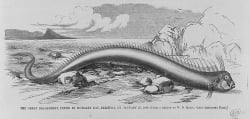History
More lore can be found on the official website
The Commonwealth is made up of three territories - Hydrus, Lepus, and Canis. They are united under one government and are former territories of the Ursan Federation. The government is highly proactive in anything it does, such as societal reforms or military action. The lands of the commonwealth harbor many natural resources, namely coal, oil, and gas. These resources are often extracted in abundance, with extra supplies sold to Orion and Auriga.
Politics
Rising from the ashes of the Grease Wars, the states of Hydrus, Canis, and Lepus united into a singular entity, the Hydrus Commonwealth, its capital located in Hydrus. A united government was established, comprising of a democratically elected ministry, ruled by another elected council comprised of: A Prime Minister, Hydrus State Minister, Canis State Minister, and a Lepus State Minister.
These 4 combined act as the Ministry of State, with the PM being the state minister. They also set policy decisions, budget, and coordination for the other ministers based on the needs of each state.
There are also 6 other ministries with their own ministers:
- Interior Minister
- Treasury Minister (includes commerce)
- Health Minister
- Justice Minister
- Defense Minister
- Security Minister (ISA is under this ministry)
The Prime Minister and State Ministers are elected together every 6 years. Each individual state votes for their state's minister while the PM is voted in by the entire nation. Other ministers are elected together every 3 years. Each individual state will vote for their choice of minister, and the PM and SMs will together decide on which of the 3 candidates to occupy each position. There are no set limits of the amount of terms able to be served for any ministry position.
Each individual state has it's own degree of autonomy with it's own lawmaking and justice systems. The Ministry of Justice can create certain federal laws, while each state have their own set of state laws. A federal court also exists. Hydrus is often considered among most progressive nations on Forma, due to the government's high proactiveness in issues.
The tricolor of the flag represents the blood sacrificed to create the country, whilst the 7 spikes on the north star represent both their independence from Ursa (who's flag has 8 spikes), as well as the 7 ministries that make up the government.
Military
Women & Women's Rights
Hydrus is the same as Antares except democratic rather than authoritarian and there is freedom of expression. But there are no mentions on the extent in which women were allowed to serve in frontline roles.
Hydrus Information and Security Authority
Hydrus Information and Security Authority Originating from the Grease Wars, the Information and Security Authority (ISA) began with agents posing as refugees attaining the information of Ursan troop movements and bases throughout the region. When Ursan forces retreated at Alcor, the ISA used Ursan uniforms taken from dead soldiers and snuck aboard the evacuation ships to establish a spy network inside the Ursan mainland. During the reconstruction of the commonwealth, the ISA was expanded and restructured. Now covering a more wide array of duties, the ISA was divided into several sections, each with their own responsibilities. The closer the section was to "A", the more important its role was. For example, Section C was responsible for internal security and investigations, while Section F was responsible for tracing tax fraud.
During the Forman War, the ISA was extremely valuable for Hydrus. Section D of the ISA worked in tandem with Hydrus Sub Hunting Fleets as well as the main naval forces by feeding them information of fleet movements and battle plans. This information would give Hydrus a strategic advantage which allowed them to effectively fight against opponents of higher caliber, like the Antares and Ursan fleets.
Teams and Organizations
Hydran Association of Baseball
There are 32 baseball teams in the HAB as of 2002, separated into four leagues and further separated into two divisions. Despite the organization being named “Hydran”, it also includes teams from Ursa and Libra. Such teams were incorporated starting from the 1920s within the Arctic and Tropic Leagues respectively.














